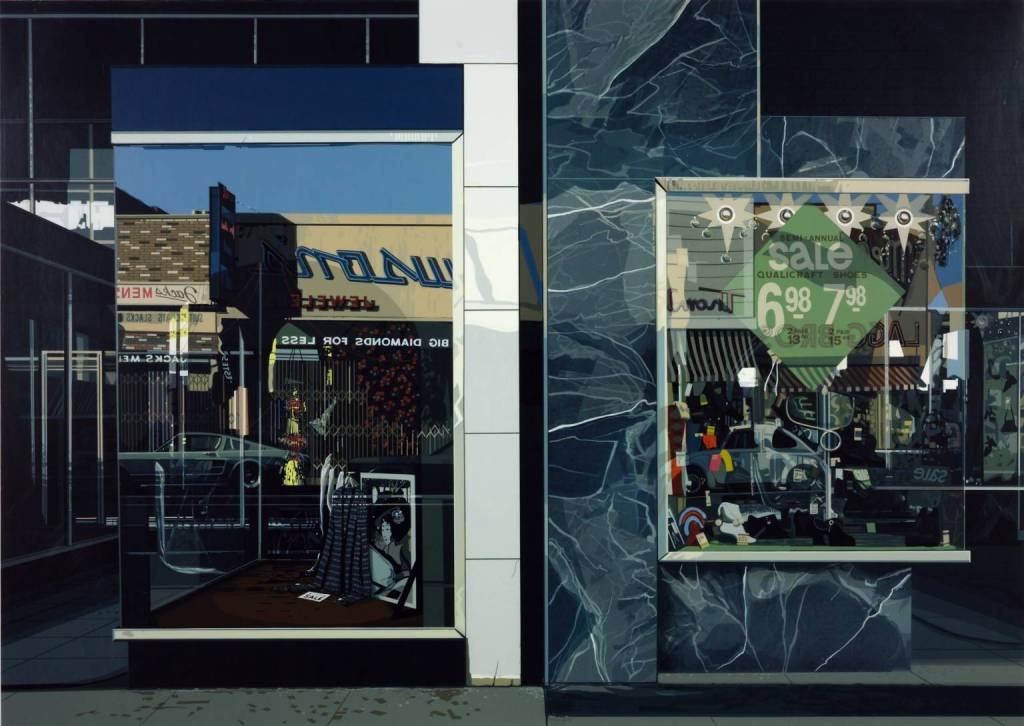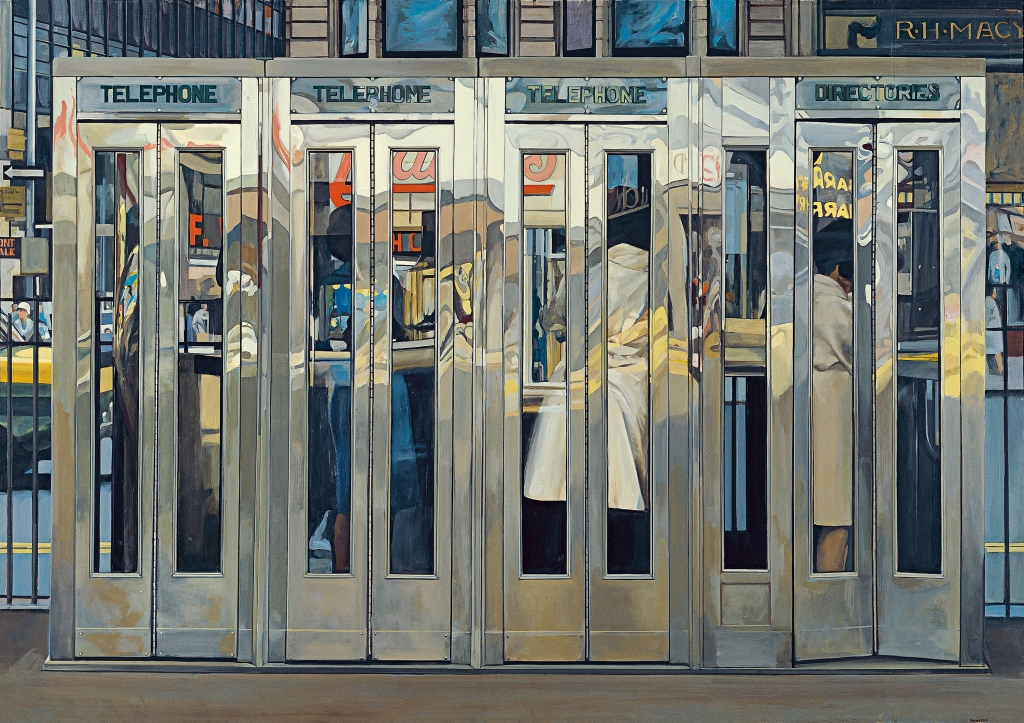Richard Estes is a photorealist painter from America. Estes’ paintings focus on man-made environments and are famous for showing highly reflective surfaces such as glass and metal – he paints his scenes so realistically that they look like photographs. His paintings are often called super-realistic or hyper-realistic.
Richard Estes is an American painter who was born in 1932. Can you work out how old he is? He is famous for painting mundane, every-day built environments in a hyper-realist style, meaning his paintings look like photographs! He often paints reflective surfaces such as glass windows or metallic objects.
Richard Estes’ oil paintings could easily be mistaken for photographs because they look so realistic. Estes chooses to paint street scenes, architectural structures and reflective (often metallic or glass) surfaces. His paintings often have a linear quality, which means the use of line plays a big part in how the paintings look and feel. Often, straight lines will be interspersed with more natural, flowing lines or curves. Because Estes paints a lot of man-made structures, his colour palette is often muted, with lots of grey and blue tones. He achieves a 3D look and feel through his use of light and shadow.
Top facts about painter Richard Estes:
- Richard Estes is a famous painter who was born on 14th May, 1932 in Kewanee, Illinois, USA.
- His painting style has been described as super-realism, sharp-focus realism, neo-realism, photo-realism and radical realism.
- He studied fine arts at The School of the Art Institute of Chicago.
- His artworks have been exhibited at galleries around the world, including the Metropolitan Museum of Art.
- Estes was granted a National Council for the Arts fellowship in 1971.
- He is known as one of the founders of the international photo-realist movement of the 1960s.
- Estes’ paintings are usually a combination of different photographs put together.
- Estes is known for painting cityscapes, urban scenes and architectural structures.
- About his paintings, he said “I think the real test is to plan something and be able to carry it out to the very end. Not that you’re always enthusiastic; it’s just that you have to get this thing out. It’s not done with one’s emotions; it’s done with the head.”
Estes’ paintings can be strange to look at because they have unusual compositions, sometimes looking like they have been split into two parts. He will sometimes use lines right down the middle of the canvas, which make it seem like we are looking at two different pictures. Estes builds on his confusing compositions by purposefully not having one main focal point.
Look at the portrait painting below and think about what the main focus could be. Is it the man, right on the edge of the painting? Or the big, blank wall, right in the middle of the painting? Why? The composition (or layout) is unusual because normally we would expect the person to be the main focus point. Estes has cleverly used line to create perspective in the painting; it looks like the balconies go off into the distance. Out of the window on the right,the white wall guides our eyes to another building much further away. Try to think of 5 different words to describe the painting below.
Richard Estes ‘blocks’ colours in his paintings right next to each other. The use of light, right next to shadows and dark tones, emphasises the 3D, realistic effect his paintings have. The use of pure white around edges of features give the illusion of a shiny surface and cool colours become the shadows.
Richard Estes uses oil paints for his work. Oil paints are ‘thinned’ using oils (surprise!) which means they blend very easily. Oil paints give a very rich, glossy finish – perfect for painting glass, metal and other reflective surfaces. By blending his colours smoothly, Estes removes the mark of the brush and any brush strokes. If we could see brush strokes in his work, it would look less realistic.
Look at the close up of the painting Telephone Booths below – how many colours has Estes had to mix for one little section of the metal? From a distance it looks realistic because there are a wide range of tones to represent the different light reflections and fragmented shapes.
Think about colour theory – what type of colour scheme has Estes used on the metallic frames on the telephone booths above?
Richard Estes is most famous for his photorealist paintings of American street scenes. The majority of his paintings capture reflections, shiny objects and architectural structures. In order to make his paintings feel more realistic and achieve the hyper-realism we recognise, Estes has to use natural colours that we see in unedited photographs. Imagine if the sky in one of his paintings wasn’t quite the correct colour – the whole painting would look strange!
Watch the clip below to see Richard Estes photographing and researching his subjects before painting them:
How to create artwork like Richard Estes:
Here are the materials I would suggest to use to create paintings like Richard Estes. Oil paints can be difficult to use at first, and quite complicated if you’ve never used them, but keep going! They are beautiful to paint with. You’ll definitely need thin brushes for the details too.
What sort of mood could you say Estes creates? Think about the colours and the fact that usually, there aren’t many people in his paintings.










